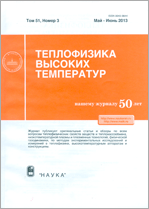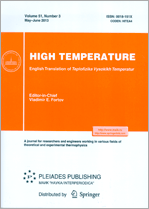|
This article is cited in 25 scientific papers (total in 25 papers)
Heat and Mass Transfer and Physical Gasdynamics
Laser ablation: Physical concepts and applications (review)
N. A. Inogamovab, Yu. V. Petrovac, V. A. Khokhlova, V. V. Zhakhovskiibd
a L.D. Landau Institute for Theoretical Physics of Russian Academy of Sciences
b All-Russia Research Institute of Automatics named after N L Dukhov, Moscow
c Moscow Institute of Physics and Technology (National Research University), Dolgoprudny, Moscow Region
d Joint Institute for High Temperatures, Russian Academy of Sciences, Moscow
Abstract:
Laser ablation (i.e., the removal of target material upon irradiation) is under consideration; it is widely applied in some technologies. Physical models needed for an understanding of ablation have been developed since the invention of the first lasers. Some phenomena have been thoroughly investigated; however, there are still many problems that should be analyzed additionally. These poorly studied phenomena include surface structuring. The problems concerning ablation in liquid and laser forging/peening are not yet completely understood. They represent two sides of the same process: in the first case, the emphasis is on the description of motion of the substance beyond the target, whereas, in the case of laser forging, one abstracts from the plume and considers the elastoplastic transformations caused by a shock wave inside a target. The hydrodynamics of these processes differs radically with the transition from ultrashort to long pulses.
Received: 16.03.2020
Revised: 26.03.2020
Accepted: 30.03.2020
Citation:
N. A. Inogamov, Yu. V. Petrov, V. A. Khokhlov, V. V. Zhakhovskii, “Laser ablation: Physical concepts and applications (review)”, TVT, 58:4 (2020), 689–706; High Temperature, 58:4 (2020), 632–646
Linking options:
https://www.mathnet.ru/eng/tvt11378 https://www.mathnet.ru/eng/tvt/v58/i4/p689
|


| Statistics & downloads: |
| Abstract page: | 273 | | Full-text PDF : | 333 |
|





 Contact us:
Contact us: Terms of Use
Terms of Use
 Registration to the website
Registration to the website Logotypes
Logotypes








 Citation in format
Citation in format 
